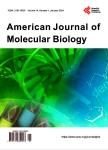A multi-criteria decision-making approach for comparing sample preservation and DNA extraction methods from swine feces
A multi-criteria decision-making approach for comparing sample preservation and DNA extraction methods from swine feces作者机构:Department of Animal Science McGill University Montreal Canada Department of Food Science and Agricultural Chemistry McGill University Montreal Canada School of Engineering University of British Columbia-Okanagan Kelowna Canada
出 版 物:《American Journal of Molecular Biology》 (美国分子生物学期刊(英文))
年 卷 期:2012年第2卷第2期
页 面:159-169页
学科分类:1002[医学-临床医学] 100214[医学-肿瘤学] 10[医学]
主 题:Sample Preservation DNA Extraction Swine feces Multi-Criteria Decision-Making Weighed Sum Method
摘 要:Molecular microbiological methods, such as competetive PCR, real-time PCR, denaturing gradient gel electrophoresis (DGGE) and large-scale parallel-pyrosequencing, require the extraction of sufficient quantity of high quality DNA from microbiologically and chemically complex matrices. Due to difficulties in the field to standardize/select the optimum DNA preservation-extraction methods in view of laboratories differences, this article attempts to present a straight-forward mathematical framework for comparing some of the most commonly used methods. To this end, as a case study, the problem of selecting an optimum sample preservation-DNA extraction strategy for obtaining total bacterial DNA from swine feces was considered. Two sample preservation methods (liquid nitrogen and RNAlater?) and seven extraction techniques were paired and compared under six quantitative DNA analysis criteria: yield of extraction, purity of extracted DNA (A260/280 and A 260/230 ratios), duration of extraction, degradation degree of DNA, and cost. From a practical point of view, it is unlikely that a single sample preservation-DNA extraction strategy can be optimum for all selected criteria. Hence, a systematic multi-criteria decision-making (MCDM) approach was used to compare the methods. As a result, the ZR Fecal DNA MiniPrepTM DNA extraction kit for samples preserved either with liquid nitrogen or RNAlater? were identified as potential optimum solutions for obtaining total bacterial DNA from swine feces. Considering the need for practicality for in situ applications, we would recommend liquid nitrogen as sample preservation method, along with the ZR Fecal DNA MiniPrepTM kit. Total bacterial DNA obtained by this strategy can be suitable for downstream PCR-based DNA analyses of swine feces.



